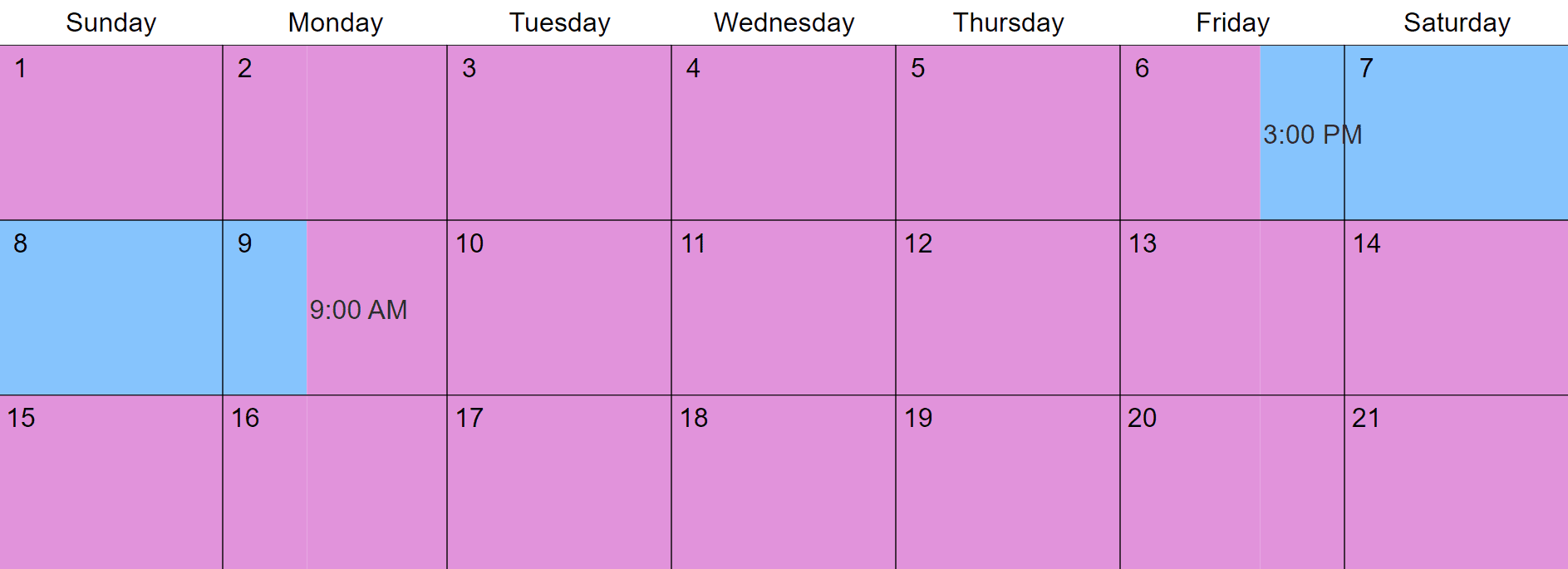North Carolina Custody and Visitation Schedule Guidelines
Visitation schedules explain when a child spends time with each parent. A schedule is one part of your parenting plan.
You will need to submit a schedule to the court if you settle your case. You can also present a suggested schedule at trial or in negotiation settings like mediation and collaborative law. Before you put together a schedule, consider your child's unique needs, and remember that parenting time will affect your child support payment. Contact your county court to find out if it has any specific rules, regulations or forms.
Choosing a type of physical custody
Physical custody refers to whom the child lives with. Begin by deciding if joint physical custody or sole physical custody would be best for your child, and include this required element in your parenting plan.
In joint physical custody, your child spends significant time with both parents. In sole physical custody, your child lives primarily with one parent and usually has visits with the other.
The court will approve whatever type of physical custody you and the other parent agree to, unless it has concerns about the child's well-being.
If you do not agree, the court will decide for you. Expect joint physical custody, as this is the default, as long as it's in the child's best interest.
If you want sole physical custody and the other parent disagrees, you must show the court how it would benefit your child.
Showing the details of your physical custody arrangement
A custody and visitation schedule explains the details of your arrangement. The schedule should specify:
- If/how parents will split time with the child on weekdays
- If/how parents will split time with the child on weekends
- If/how parents will split time with the child during school breaks
- If/how parents will split time with the child on holidays and special occasions
- If/when each parent can take the child on vacation
Your schedule must have a written version. You have the option to add a visual custody calendar for easier comprehension.
Holiday schedules take priority over regular parenting time schedules. You might alternate who gets a particular holiday each year, celebrate some holidays with the children every year or split a holiday in half so the children can spend time with both parents.
Be aware that some holidays coincide with school breaks, which can have their own schedules.
Parents should also consider how vacation time will work. Can it overlap with the other parent's scheduled time? Can the child be removed from school for vacation? How long can a vacation last? Address these issues in your parenting plan.
Common schedules
Parents can adjust popular visitation schedules to fit their needs or create a schedule from scratch.
Below are examples of schedules you and the other parent can consider. Keep in mind that North Carolina courts prefer both parents to share significant time with their child, assuming it meets the child's best interests.
Alternating weeks schedule: Your child spends one week with you and the next week with the other parent. This is a 50/50 schedule, meaning each parent has the child 50 percent of the time.
 You can customize this with Custody X Change.
You can customize this with Custody X Change.
2-2-3 schedule: Your child spends two days with you, two days with the other parent and then three days with you. The next week the order switches. This is a 50/50 schedule.
 You can customize this with Custody X Change.
You can customize this with Custody X Change.
4-3 schedule: Your child spends four days with you and three days with the other parent. This is a 60/40, joint custody schedule.
 You can customize this with Custody X Change.
You can customize this with Custody X Change.
Every 3rd weekend schedule: Your child lives with you, but visits the other parent every 3rd weekend. This is an 80/20, sole custody schedule.
 You can customize this with Custody X Change.
You can customize this with Custody X Change.
Other visitation arrangements
Judges may order supervised visitation if a child is at risk when left alone with a parent, due to issues like addiction or abuse. The court can also reduce or eliminate the parent's time with the child.
Some counties in North Carolina have supervised visitation centers, providing a neutral, monitored site for a parent to interact with their child.
The easiest way to make a schedule
If you're like most parents, creating a custody and visitation schedule will feel daunting. How do you write something that meets legal requirements and doesn't leave any loose ends?
The Custody X Change app makes it easy. Either customize a schedule template, or click and drag in your custody calendar to make a schedule from scratch.
Try this with Custody X Change.
Then watch a full description appear in your parenting plan.
Try this with Custody X Change.
The combination of a visual and written schedule means your family will have no problem knowing who has the child when. Take advantage of Custody X Change to make your schedule as clear and thorough as can be.
